
A big part of the infrastructure is already existing. In the Netherlands sources of fuel are everywhere. Take a drive and be aware of all ponds and ditches around. Below is a map of the Netherlands with percentage of surface area accounting for ditches and neighbourhood ponds.
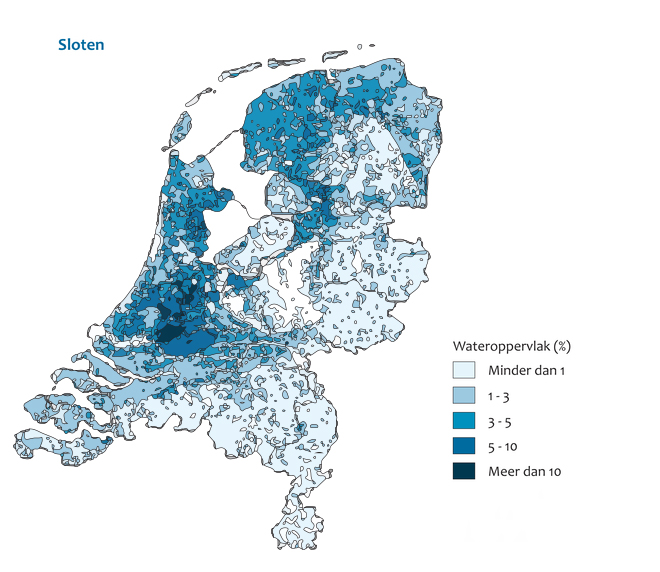
Or zoom out on the map and randomly zoom in again, it is easy to find a little pond or ditch that will serve as source for fuel anywhere in the Netherlands.
Musispark, Arnhem, the Netherlands. Home to the first plompstation
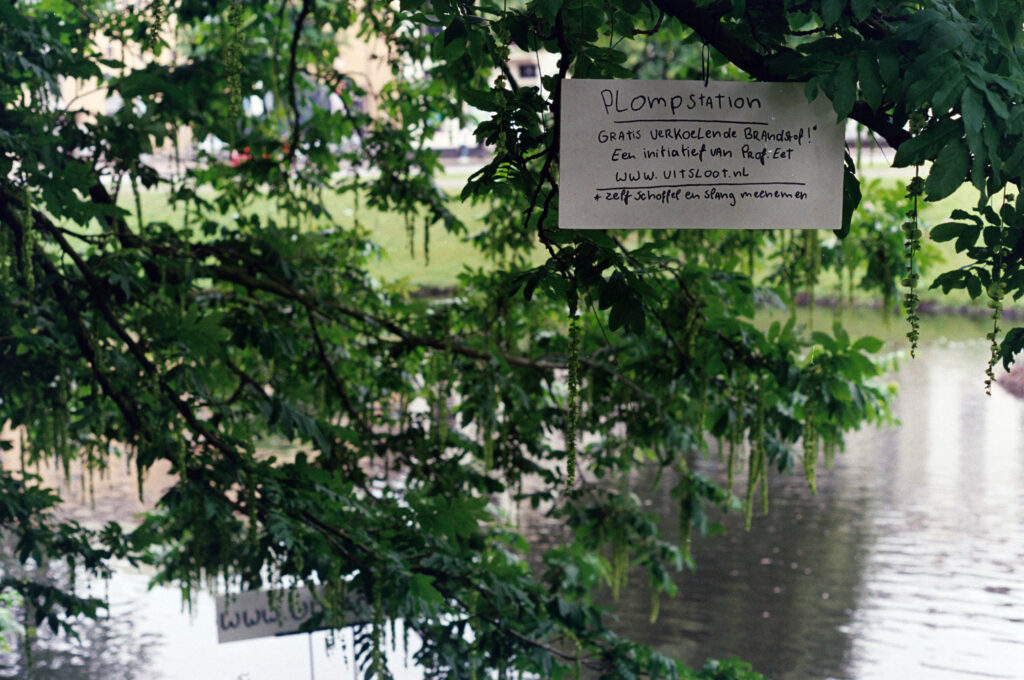
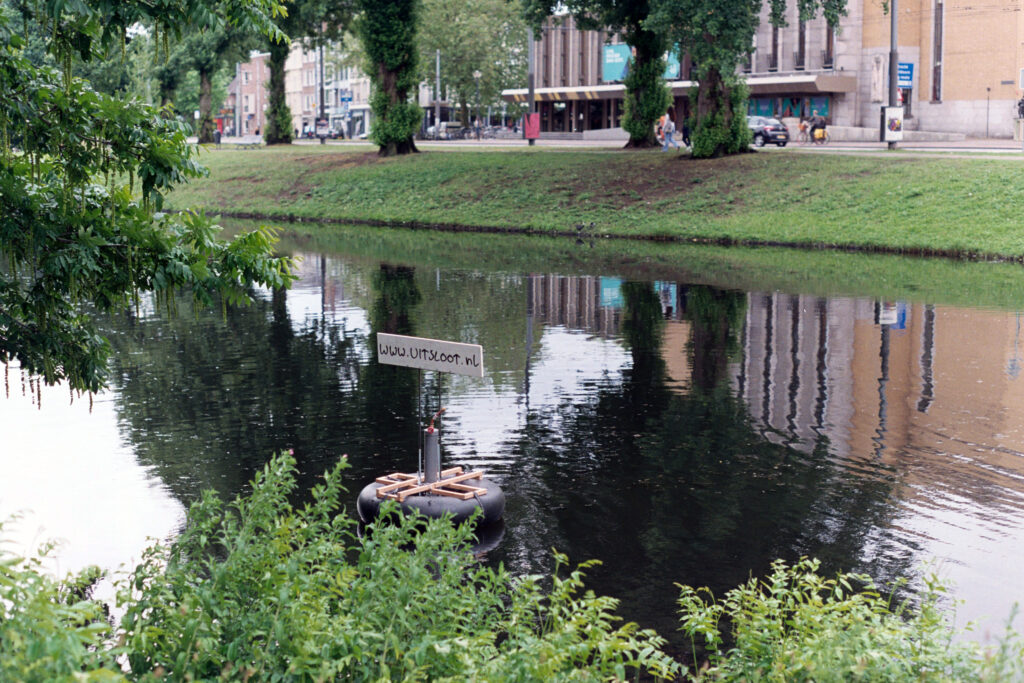
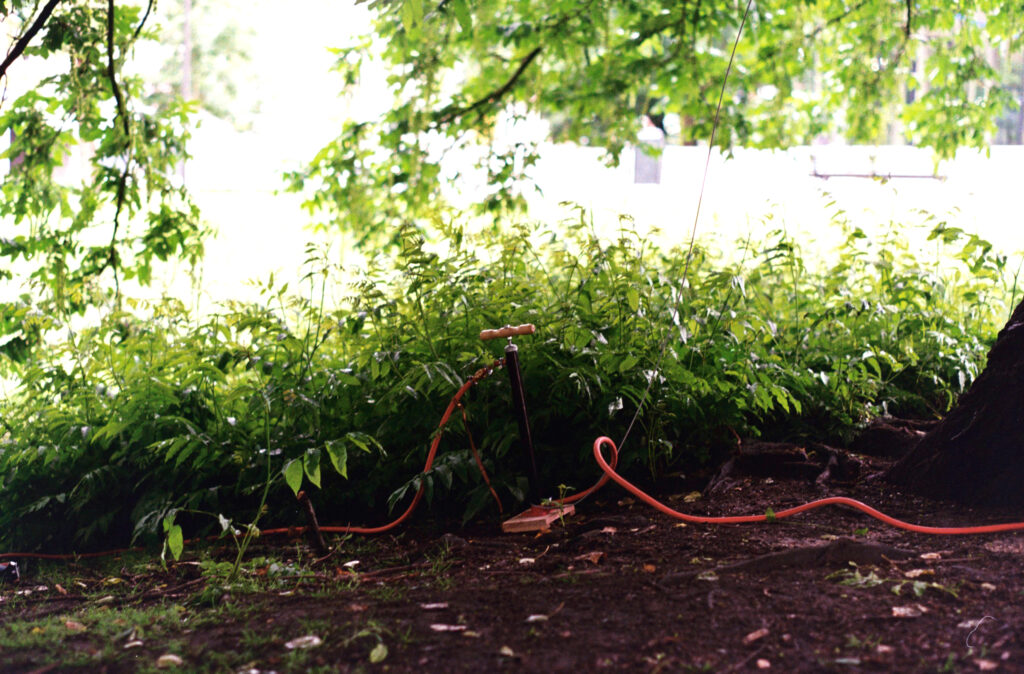
A plompstation consists of a collecting apparatus which is anchored to the water, only reachable by those who bring their waders. Next to that there is a pressure pump locked on site for transferring the fuel to your fuel container. In order to avoid vandalism, one needs to bring their own tools and hoses to connect the collecting apparatus to the pressure pump.
The connectors used are simple EURO-profile snap on connectors. For the hose, 2 male connectors are needed. In order to connect the pressure pump you need a female EURO connector attached to your fuel container inlet. These can be bought cheaply at any DIY-store around town.
Harvesting and collecting on bigger scale
Working 8 hours to fill up a fuel container might get boring after a while, even though it illustrates the amount of effort needed to actually use this much energy. For those not interested in harvesting themselves, suggestions might make it an easier job.
Designed with actual 1:1 application in mind.
These contraptions can be built with simple construction materials available in most DIY stores or scrapyard. PVC sewer pipes, tractor inner tubes, wooden profiles and small engine parts paired together with existing and proven technology will make building and maintenance easy. Their engineering is open for discussion and will probably be altered in real world construction and testing.
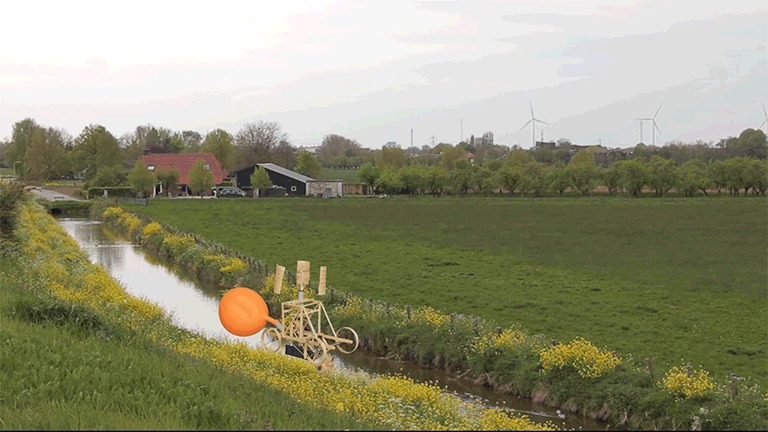
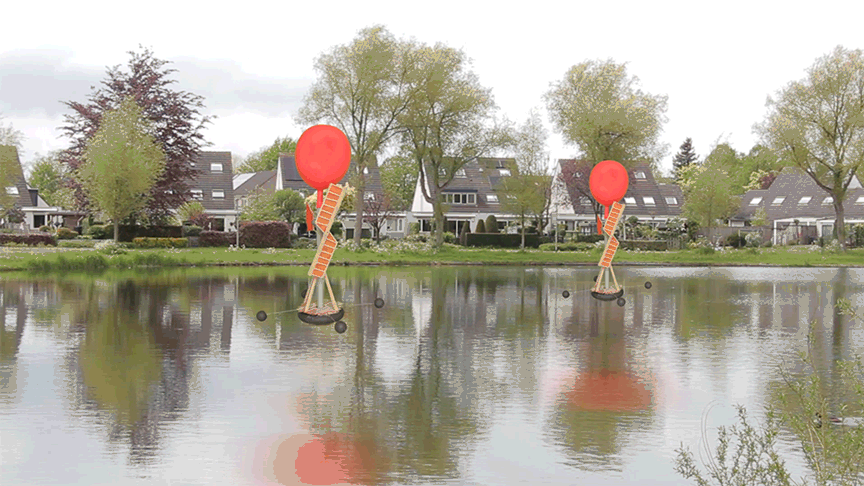
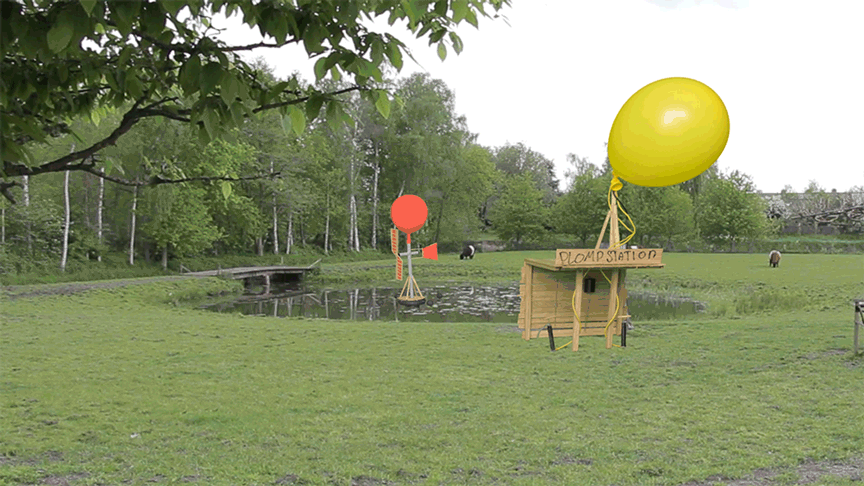
Inner workings – concepts – Open for discussion and experimentation
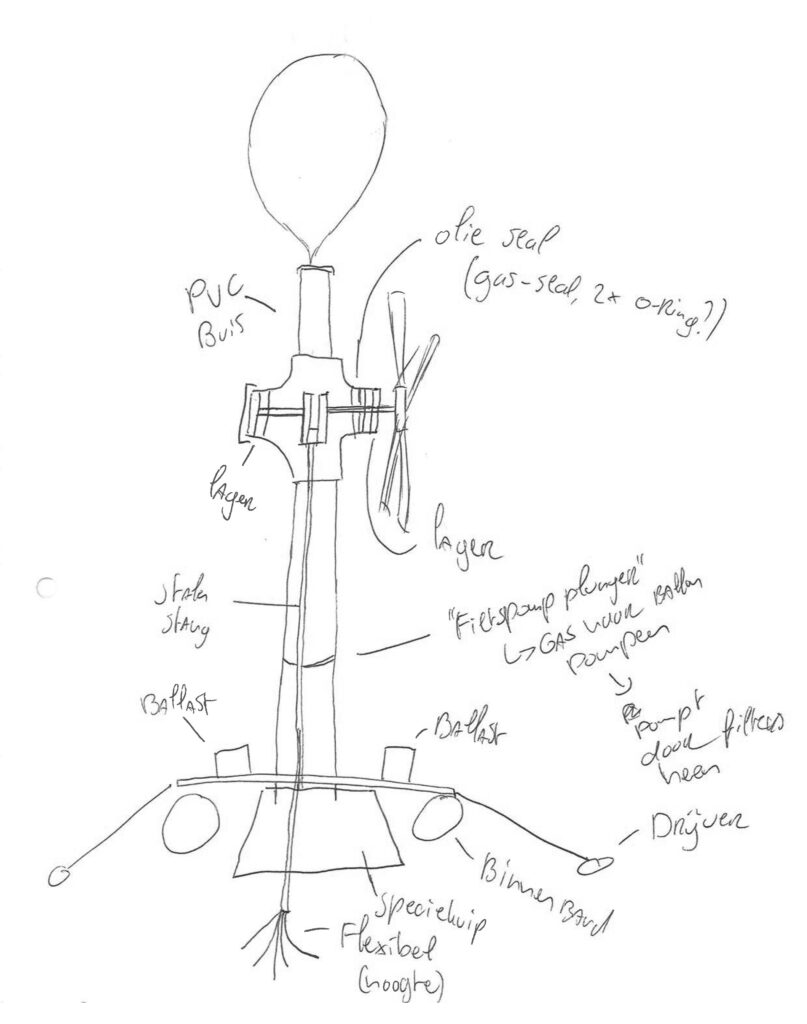
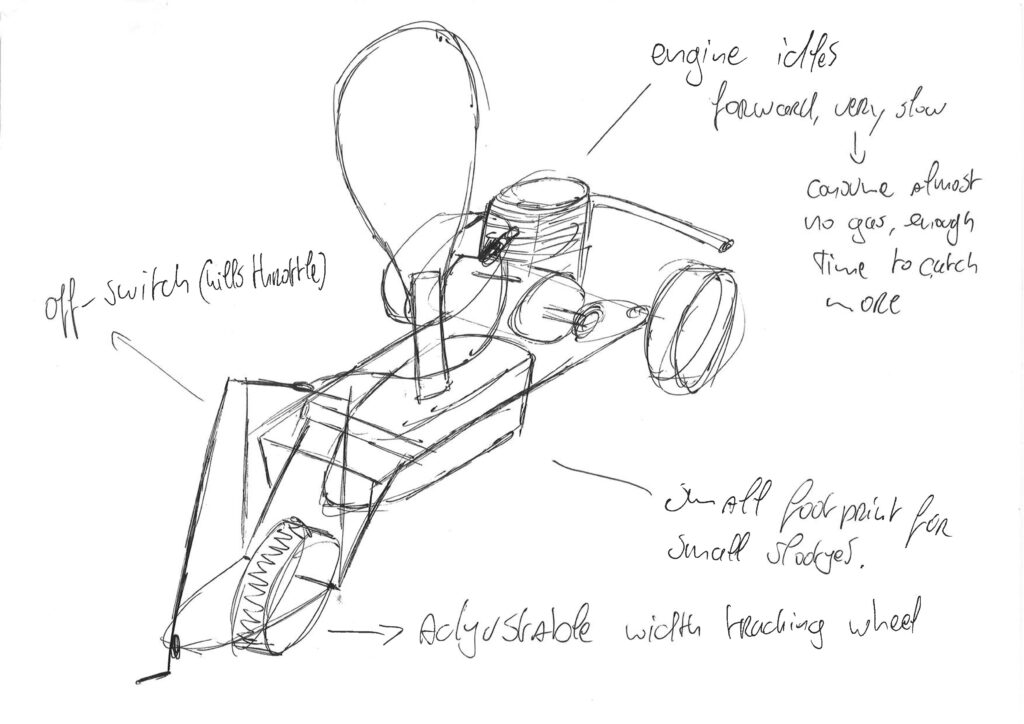
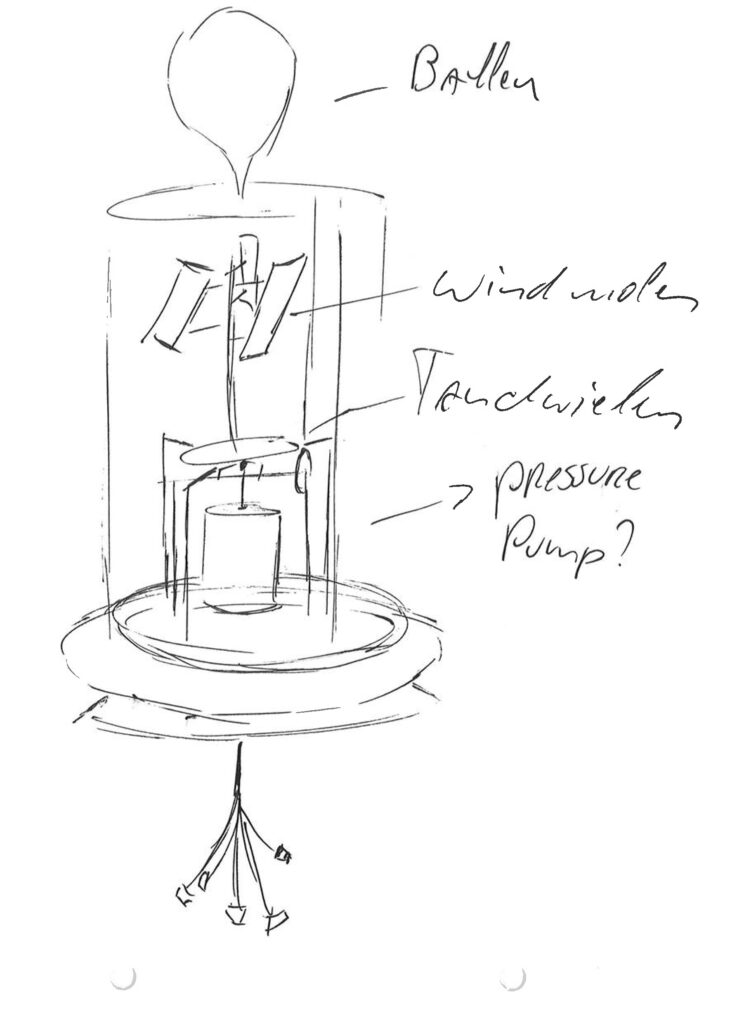
The Municipality of Arnhem
I propose to rebuild our current municipalities ”green management” around self-harvested gas. The knowledge is already there, all that is needed is to convert the current gasoline vehicles to gas. As a model for society, municipalities should do their best to take the lead in the energy-transition.
Lets make the municipality a true example of sustainable energy.
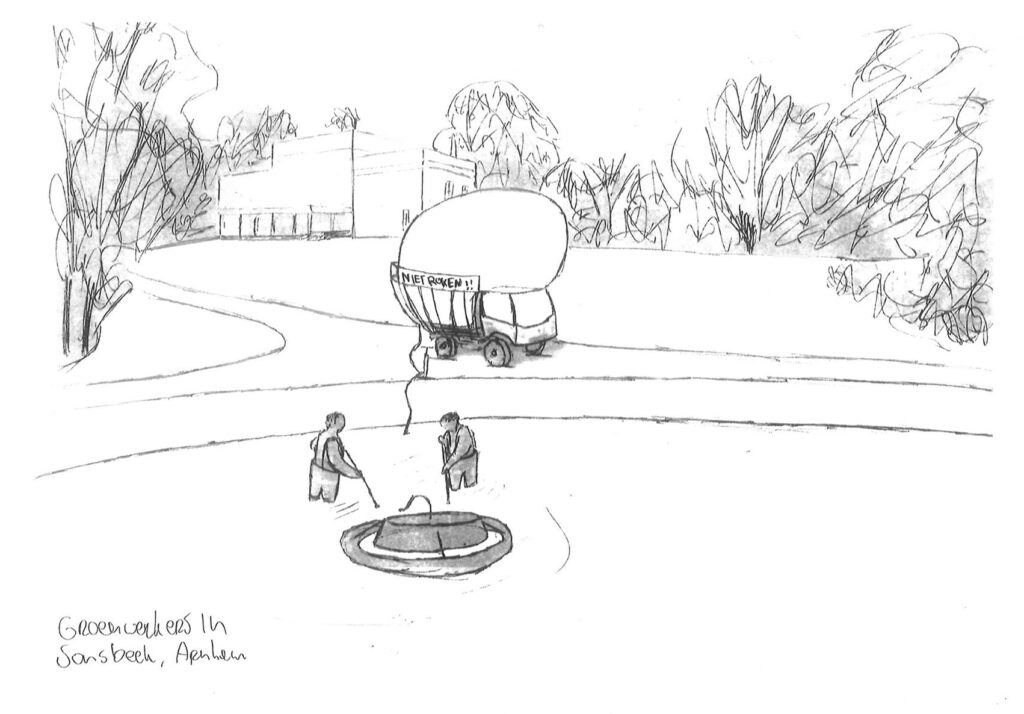
Top: Municipality greenworkers harvesting gas, collecting it in their special fuel vehicle, to be delivered to different locations.
Bottom: fuel makes mowing the city’s lawns easy work.
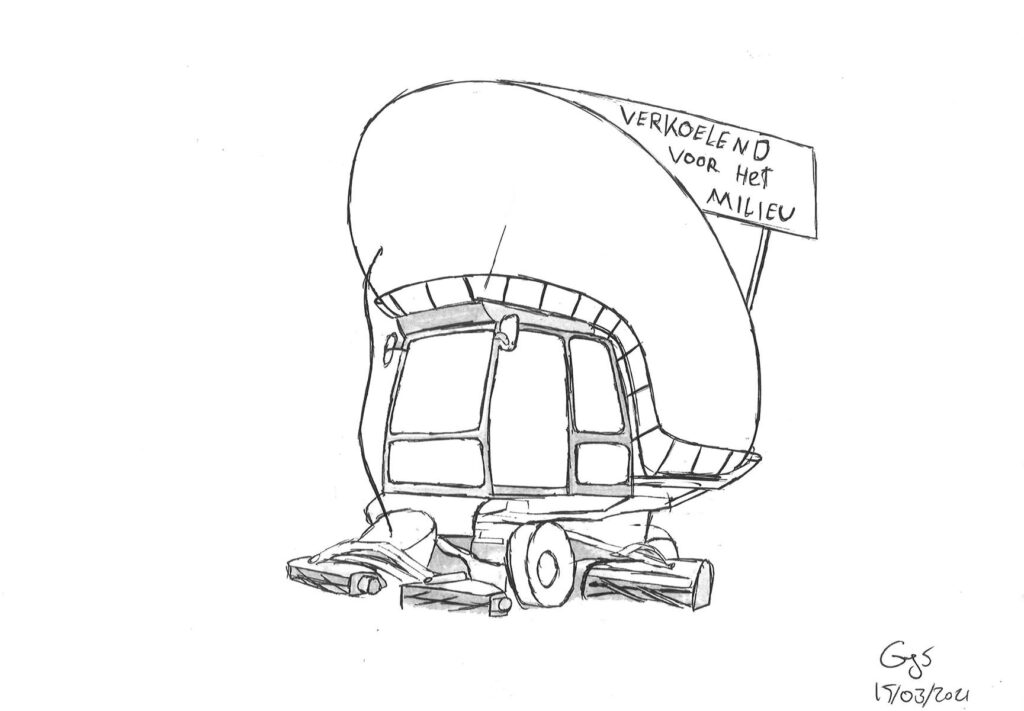
None of these contraptions are guaranteed to work. Construction on your own risk. Just start and you will soon find out that anybody can build any of these, as long as you put in the effort, be imaginative and not afraid to get your hands dirty.
In need of help? Are you a municipality looking to be a leader in the energy transition? Contact Prof. Eet at the Slootservice
